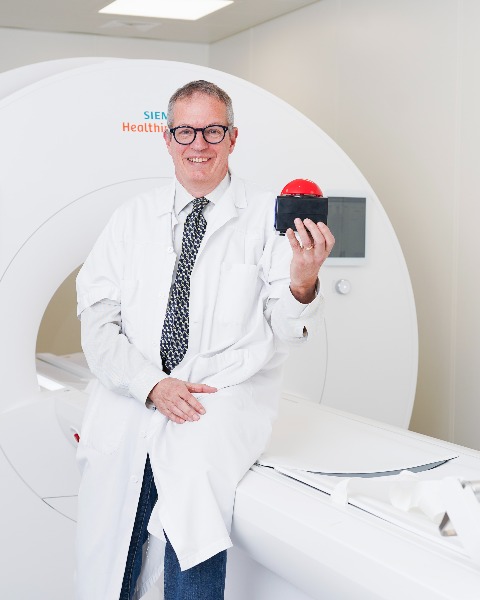Oral Abstract
Advanced myocardial scar segmentation with automated analysis of joint bright- and black-blood late gadolinium enhancement images
- TG
Thaïs Génisson, MSc
PhD student
IHU LIRYC, Heart rhythm disease institute, Université de Bordeaux – INSERM U1045, Avenue du Haut Lévêque, 33604, Pessac, France, France - TG
Thaïs Génisson, MSc
PhD student
IHU LIRYC, Heart rhythm disease institute, Université de Bordeaux – INSERM U1045, Avenue du Haut Lévêque, 33604, Pessac, France, France - Vd
Victor de Villedon de Naide, MSc
PhD student
Bordeaux University - INSERM U1045, France - KN
Kalvin Narceau, MSc
Research Engineer
Bordeaux University - INSERM U1045, France - bd
baptiste durand, MD, PhD
Radiologist
Department of Cardiovascular Imaging, Hôpital Cardiologique du Haut-Lévêque, CHU de Bordeaux, Avenue de Magellan, 33604 Pessac, France, France - JM
Jean-David Maes, MD
PhD student
Bordeaux University - INSERM U1045, France - MV
Manuel Villegas-Martinez, PhD
Postdoctoral Student
Bordeaux University - INSERM U1045, France - TR
Théo Richard, MSc
Engineer
IHU LIRYC, Heart rhythm disease institute, Université de Bordeaux – INSERM U1045, Avenue du Haut Lévêque, 33604,, France - KH
Kun He, PhD, MSc
Engineer
IHU LIRYC, Heart rhythm disease institute, Université de Bordeaux – INSERM U1045, Avenue du Haut Lévêque, 33604, Pessac, France, France - PG
Pauline Gut, MSc
PhD student
University Hospital (CHUV) and University of Lausanne (UNIL), Switzerland - PJ
Pierre Jaïs, MD, PhD
PROF/PhD
Hôpital Cardiologique du Haut-Lévêque, CHU de Bordeaux, France 
Mathias Stuber, PhD
Full Professor
CIBM-CHUV-UNIL
Laussane University, Switzerland- HC
Hubert Cochet, MD, PhD
Professor
Department of Cardiovascular Imaging, Hôpital Cardiologique du Haut-Lévêque, CHU de Bordeaux, France 
Aurelien Bustin, PhD
Assistant Professor
IHU LIRYC, France
Presenting Author(s)
Primary Author(s)
Co-Author(s)
Assessing myocardial scar characteristics on magnetic resonance imaging (MRI) is crucial for patient prognostic and effective therapy, with left ventricle (LV) scar size being a key predictor of risk for cardiac events1. However, the poor scar-to-blood contrast in clinically-used bright-blood late gadolinium enhancement (LGE) images limits the robustness of automated segmentation algorithms for quantifying myocardial scars2,3. As a result, highly trained radiologists must manually segment the scars, a process that is time-consuming, operator-dependent and labour-intensive. In this study, we propose a post-processing solution leveraging artificial intelligence to automate scar segmentation for improved analysis of joint bright- and black-blood LGE images (SPOT sequence4).
Methods:
Data A dataset composed of 70 patients (21% female, age range 28-81yo) with known or suspected ischemic heart disease was divided into a training (70%), a validation (10%) and a testing (20%) set. Breath-held short-axis 2D whole-heart SPOT images were collected on a 1.5T Siemens Aera system. For each slice, 2 dummy heartbeats and 8 single-shot images (5 bright-blood and 5 black-blood images) were acquired in mid-diastole. The image resolution was 1.5 mm x 1.5 mm with an 8 mm slice thickness. Reference breath-held phase-sensitive inversion recovery PSIR5 images were also collected with similar imaging parameters.
Processing The pipeline involved three steps (Fig.1):
i) Automated LV segmentation on bright-blood images using a transformer-based model6,
ii) Propagation of the LV contours onto the black-blood images and exclusion of data outside these contours,
iii) Segmentation of the LV scar on the preprocessed black-blood images using a U-net model7.
Analysis The scar segmentation accuracy was assessed using the Dice Similarity Coefficient (DSC). An experienced radiologist evaluated the U-net model segmentations using a Likert scale (0-3): 0=redo, 1=major adjustments, 2=minor adjustments, 3=no adjustments needed. The obtained scar size, as a proportion of the LV, was computed from the segmentation masks. The agreement between manual and automatic scar size and between SPOT and PSIR images was evaluated with Bland-Altman analysis (expressed as bias ±1.96 standard deviation). Processing times were recorded.
Results: The proposed algorithm segmented the scar in about 0.14 seconds per slice, achieving a mean DSC of 76.1% on the test set (Fig.2). The Likert score confirmed these results, with 62% of the predicted scar segmentations score of 3, 33% requiring some level of adjustment and only 5% requiring revision (Fig.3A). A good agreement in scar size was found between automatic and manual segmentations on SPOT with minimal bias (+4.63 % ± 14.9, Fig.3B). There was good agreement between the manual segmentation on reference PSIR images and the automated method using SPOT images (bias +9.54 % ± 20.88, Fig.3C).
Conclusion:
The proposed method for automated scar segmentation on bright- and black-blood LGE images achieved accurate results, closely matching manual segmentation on both SPOT and reference PSIR images.
Fig.1: Diagram of the proposed pipeline for automated myocardial scar segmentation. Left: SPOT collects 2D co-registered bright-blood and black-blood late gadolinium enhancement images in a single sequence. Middle: A transformer-based model is employed to segment the left ventricular wall fully automatically on bright-blood SPOT images and the pixels inside the wall are extracted. The left ventricle contours are propagated onto the black-blood SPOT image. Right: A U-net model is used to automatically segment the myocardial scars on the latter. Scar contours are propagated onto the bright-blood images to visualize the scar location and scar burden. .jpg)
Fig.2: Full ventricular view of SPOT images and scar segmentation prediction obtained in a 63-year-old-male patient with myocardial infarction originating from the left anterior descending artery. .jpg)
Fig.3: A) Proportion of test images by Likert scale values. B) Bland-Altman analysis for scar size values as a percentage of the left ventricle comparing manual and automatic scar segmentation on SPOT images for all patients in the test set. C) Bland-Altman analysis for scar size values as a percentage of the left ventricle comparing manual scar segmentation on PSIR reference images and automatic scar segmentation on SPOT images for all patients in the test set..jpg)

